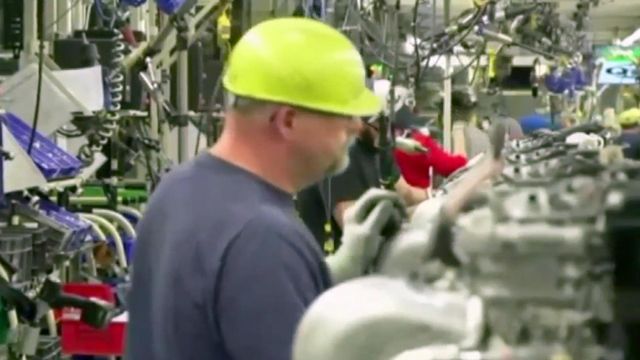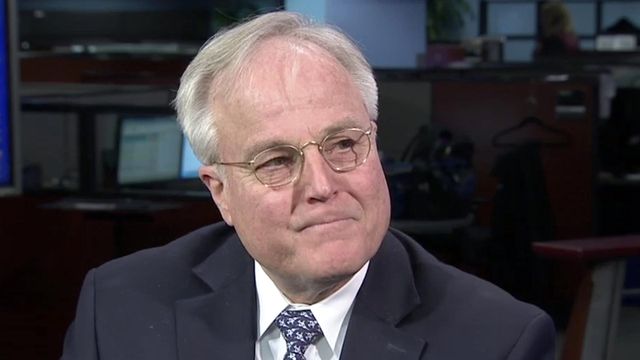Why geography doomed NC's shot at Toyota-Mazda plant
Economic developers say they can boil down North Carolina's loss of a new Toyota-Mazda plant to rival Alabama this week to a single crucial factor.
Location, location, location.
Alabama officials confirmed Wednesday that the two companies chose their state for a new manufacturing facility that will build sedans and crossover vehicles, largely for the domestic market. The plant, aiming to open in 2021, is expected to bring 4,000 jobs in exchange for more than $370 million in incentives and other perks.
The Tar Heel State was among the finalists looking to land the new plant, a goal of governors and other state officials since the 1990s.
North Carolina has lost high-profile auto plants plenty of times in the past – Mercedes, BMW and Volvo, to name a few. But in this deal, economic developers say the state's loss has more to do with geography than anything else.
Toyota's and Mazda's aim to sell cars to American markets means they'll export far fewer of their vehicles than, say, Volvo, which located its plant in South Carolina with easy access to the Port of Charleston in mind. In this case, being farther away from the center of the country means being farther away from customers.
"My guess is that this has to do with logistics," said Mark Williams, president of the Strategic Development Group, a South Carolina firm that frequently works on site location projects in the Southeast. "North Carolina can't help that on one side of it is 3,000 miles of ocean and no purchasers of cars."
Building the vehicles in North Carolina can also be more expensive when the supply chain – the auto parts makers themselves – are far away from the state.
"It's just a fact of geography," said Jeannette Goldsmith, president of South Carolina-based economic development firm Goldsmith Strategy. "For them, the cost of building a car is dramatically impacted by inbound supply and where your market is."
Williams said much of the supply chain most valuable to Toyota and Mazda exists in a corridor that runs from Kentucky down to Alabama, a state that's already home to other manufacturers like Honda and Hyundai.
"I don't think there are any Japanese auto [original equipment manufacturers] east of the Appalachians," Williams said.
In an interview with WRAL News Wednesday, North Carolina Commerce Secretary Tony Copeland also cited location as the state's major disadvantage. Although there are some auto parts manufacturers here, he said it's not the "sweet spot" for Toyota and Mazda.
"We can't move north Carolina southwest. [With Alabama's] geography, they're proximally located in that corner where the supply chain is tended to locate," Copeland said.
Commerce officials in North Carolina offered the auto manufacturers more than $1.5 billion in incentives for the plant, which would have far exceeded any other offer in the state's history.
Efforts to lure the two companies, buoyed by legislative changes that provide even more incentives for "transformative projects," have drawn wide bipartisan praise from state leaders. Economic developers say North Carolina's aggressive recruitment and competitive incentives may be one reason why it was in the game for so long.
"They were in the hunt," Williams said. "Just because you do a great job doesn't mean you win, if something fundamental like logistics is not in your favor."
Included in North Carolina's package of perks was infrastructure development at an almost 2,000-acre "megasite" in Randolph County near Greensboro. Williams said that, historically, one of North Carolina's major weaknesses has been the lack of a suitable site for a manufacturing facility as large as an auto plant. But with the Randolph County megasite, she said, state leaders have been "doing all the right things" to entice car makers.
"You've got to be the bridesmaid a lot of times before you get to be a bride," Goldsmith said. "I think this was the first real opportunity this region had to show that site."
Yet, despite the improvements, she said there's more to do at the site.
"It's still a long way from being truly ready," Goldsmith said. "If I were in charge of the purse strings in North Carolina, I would probably be spending time and money advancing site to get it more ready than it is today."
North Carolina Commerce Department officials say that, despite their disappointment with the loss, they're already looking ahead to new projects.
But attracting a new auto manufacturing plant may be even harder going forward: Goldsmith said auto sales have plateaued in the last year.
"Companies are not clamoring right now to manufacture new cars and build new plants," she said. "We will see an upward trend again. When that will happen again, I don't know."
Renewed demand may come from overseas markets by companies that don't yet have a footprint in North America. Or new automotive technology may require manufacturing techniques better suited to new plants than retrofitted old production lines.
Either way, economic developers like Goldsmith say North Carolina's high-profile pursuit of Toyota and Mazda should put the state in a better position going forward – despite the loss.
"I do think there are opportunities out there," Goldsmith said. "We have not seen the last of those projects."
WRAL News Reporter Sarah Krueger contributed reporting.











